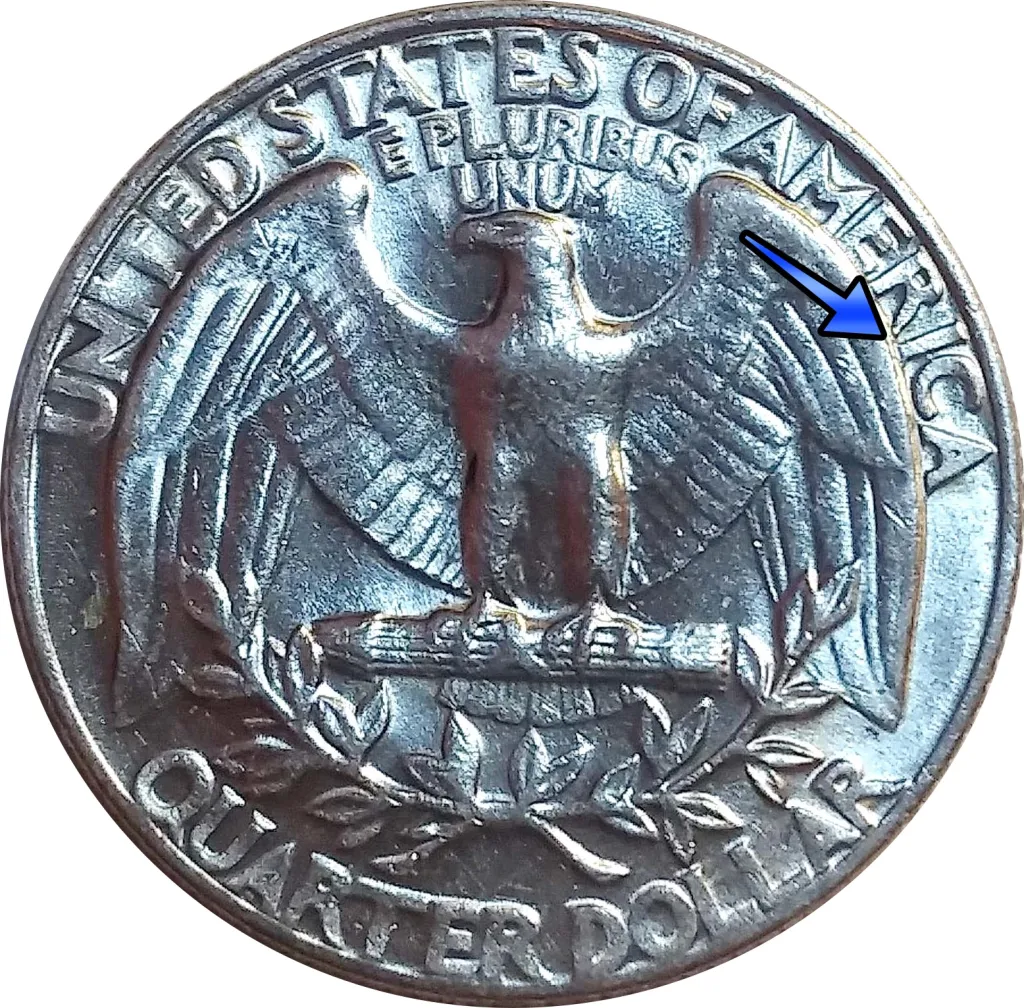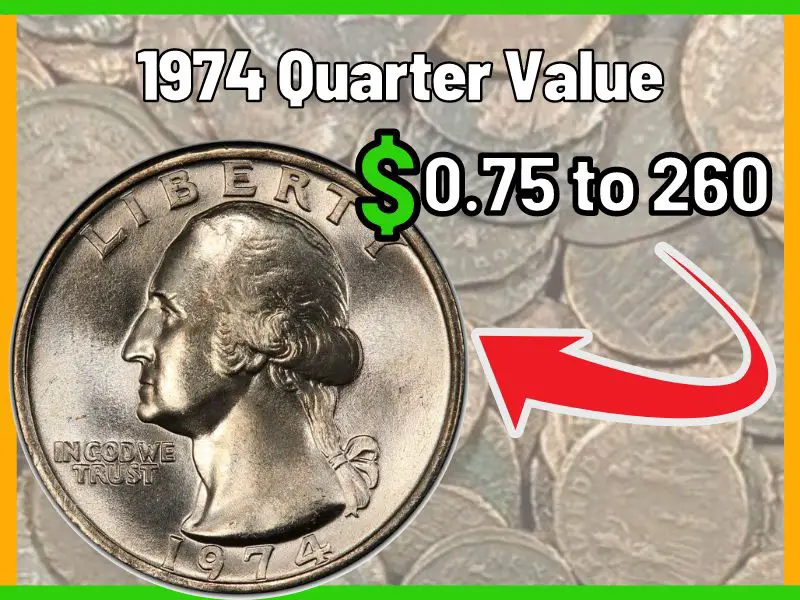
Coins from the Philadelphia mint normally sell for between 75 cents and $5.70, whereas flawless Denver mint coins can get up to $260. The typical value of a San Francisco proof quarter is $4.62 in PR 65 grade and $8–10 in PR 67 grade.
There’s something about the bigger coin that just screams “collect me!” Perhaps it’s the fact that quarters are worth more than pennies, or maybe it’s because there are so many different designs. Whatever the reason, collecting quarters can be a fun and rewarding hobby. Plus, it’s a great way to save up for those rainy day expenses.
Do you collect coins? If so, you might be interested in knowing the 1974 quarter value. There are several factors that determine the value of a coin, including its condition, rarity, and demand. The chart below provides an estimate of the 1974 quarter value based on these factors.
A Brief History Of Washington Quarters
Named for America’s first president, George Washington, the quarter was first minted in 1932 to commemorate the 200th anniversary of his birth. Washington played a key role in winning the Revolutionary War and securing independence for the new nation. He also presided over the Constitutional Convention, which helped to establish the foundations of American democracy. Consequently, it is clear that George Washington is deserving of his place on the quarter dollar.
The coin was originally intended to be a one-time release, but public demand was so high that production continued. Despite its relatively short history, the Washington quarter has undergone several design changes over the years.
The original design by John Flanagan was kept for 65 years until 1997 when William Cousins’ new obverse design depicting a more modern Washington was introduced as part of the United States Mint’s 50 State Quarters Program. From 1999 to 2008, the reverse of the coin was altered each year to feature a different design representing one of the 50 states.
With its rich history and enduring popularity, the Washington quarter is sure to remain a beloved part of American currency for years to come.
1974 Washington Quarter Identification Guide
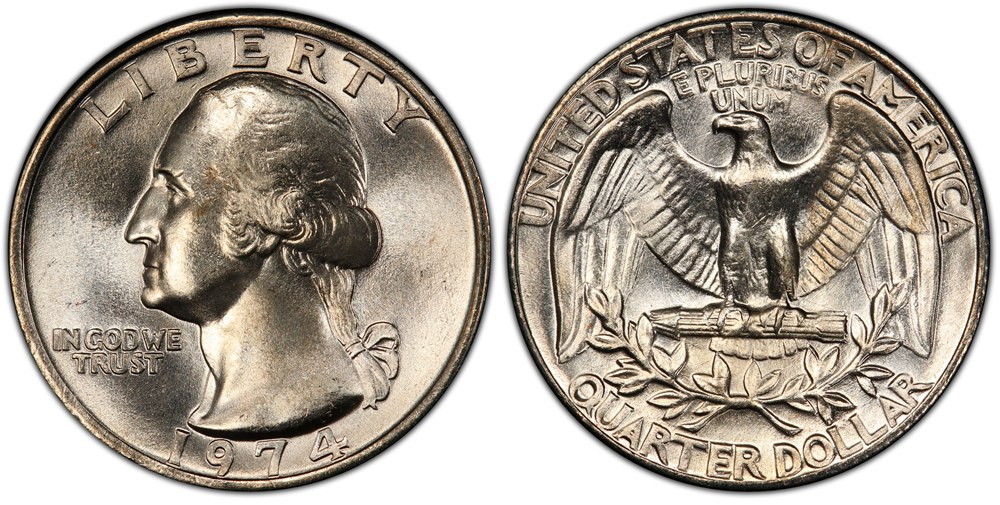
1974 Washington Quarter Specifications |
|
| Circulation Strikes | 801,456,000 |
| Year | 1974 |
| Composition | Outer layers – 75% Copper, 25% Nickel Center – 100% Copper |
| Total Weight | 5.67 grams |
| Diameter | 24.30 mm |
| Edge | Reeded |
| Diameter | 19.00 mm |
| Mint | Philadelphia, PA |
| Designer | John Flanagan |
The 1974 Washington Quarter is a beautiful coin that commemorates our nation’s history. This coin is made out of a copper core layered in nickel and weighs 5.67 grams. It has a diameter of 24.3mm and reeding on the edges.
The obverse of the coin features a portrait of George Washington, as well as the words LIBERTY, IN GOD WE TRUST, and the date. The reverse features an eagle with wings spread, standing on a bundle of arrows with two olive sprays beneath it. The words E PLURIBUS UNUM, UNITED STATES OF AMERICA, and QUARTER DOLLAR are also featured on the reverse.
The mint mark on these quarters will tell you where they were made. If there’s no mint mark, that means the coin was made in Philadelphia. But if there is a mint mark, it will be on the right side of the obverse, and it will tell you whether the coin was made in Denver (D) or San Francisco (S).
1974 Washington Quarter no mint mark
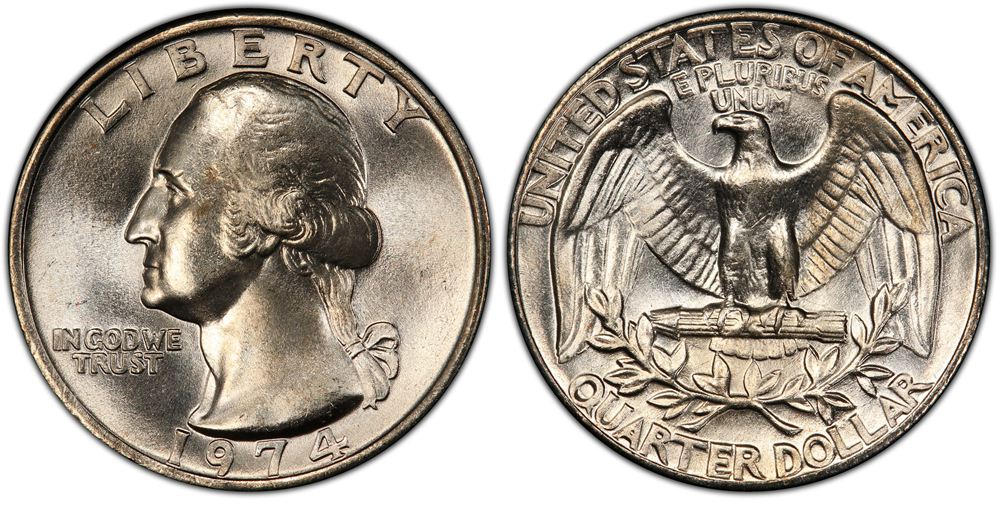
1974 Washington Quarter no mint mark
1974 D Washington Quarter
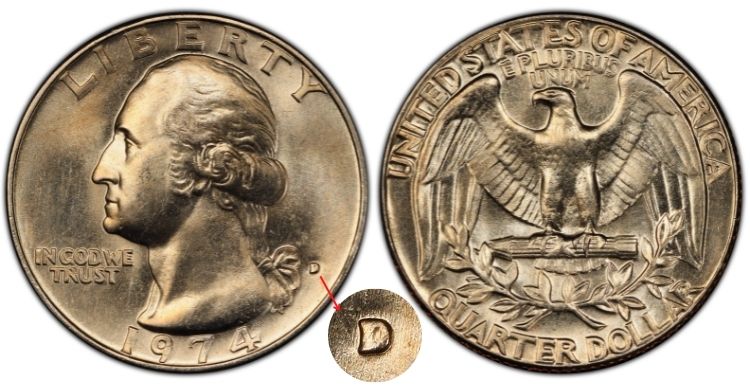
1974 D Washington Quarter
1974 S Washington Quarter
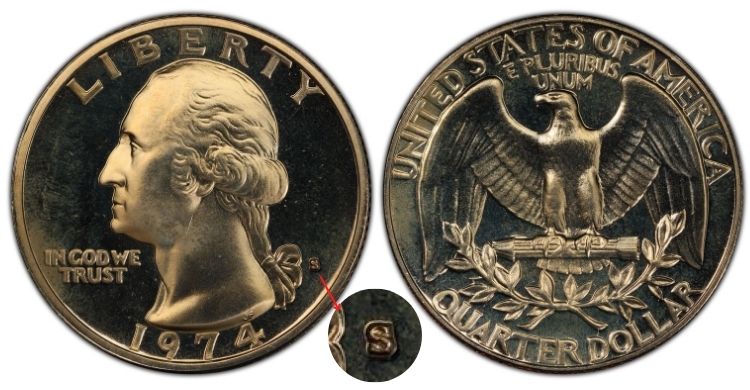
1974 S Washington Quarter
Are 1974 Washington Quarters Rare?
1974 Washington Quarters |
||
| Location | Year | Minted |
| Philadelphia | 1974 | over 800 million |
| Denver | 1974 D | 350 million |
| San Francisco | 1974 S Proof | 2.6 million |
1974 was a pretty good year for quarters. The Mint produced over 1.1 billion of them – that’s a lot of quarters! But here’s the thing: not all of those quarters are equal. Some are more rare than others, and that can make a big difference when it comes to collecting.
For example, 1974 Washington quarters from the Philadelphia mint are relatively common, with over 800 million coins in circulation. However, 1974 quarters from the Denver mint are much less common, with only about 350 million coins in circulation.
And 1974 quarters from the San Francisco mint are even more rare, with only 2.6 million proof coins in existence. Proof coins are those that are especially made for collectors and have a much higher quality than those made for circulation.
So if you’re looking for a rare 1974 quarter, your best bet is to look for one from the San Francisco mint. But whatever you do, don’t overlook those 1974 quarters – they might be more valuable than you think!
How Much is a 1974 Washington Quarter Worth
1974 quarter price chart |
||||||
| Type | MS 60 | MS 65 | MS 66 | MS 67+ | PR 65 | PR 67 |
| 1974 no mint mark | $0.75 | $5.70 | $10-40 | $150 | – | – |
| 1974 D | $0.75 | $9.30 | $15-$45 | $260 | – | – |
| 1974 S proof | – | – | – | – | $4.62 | $8-$10 |
If you’ve got a 1974 Washington quarter in your pocket, chances are it’s only worth 25 cents. Circulated coins are only worth their face value, and most quarters minted in 1974 were circulated. However, if you’ve got an uncirculated coin, it could be worth more. Uncirculated coins are those that were never used in circulation and therefore retain their original condition.
A Philadelphia coin with no mint mark can be valued anywhere from $0.75 in MS 60 grade to over $5.70 in MS 67 grade. Similarly, a Denver coin can be worth $0.75 in MS 60 grade and up to $260 in MS 67 grade. San Francisco proof quarters are typically worth $4.62 in PR 65 grade and $8-$10 in PR 67 grade.
Even if it is not worth a fortune, your 1974 Washington quarter can still offer a neat glimpse into American history.
How to Find Value of Your 1974 Washington Quarters
Do you have a 1974 Washington Quarter and are curious about its value? You’re not alone. Many people have old quarters and are wondering the same thing. The value of your 1974 Washington Quarter depends on a few factors, including its condition, mintmark, and whether it’s a proof or business strike. To determine the value of your quarter, start by comparing it to similar items that have been sold recently.
Look for items that are in the same condition as yours and see what prices they’ve sold for. This will give you a good idea of the general range your quarter falls into. For example:
- Uncirculated 1974 P Washington quarter sold for $1.25.
- Uncirculated 1974 D Washington quarter sold for $1.79.
- A 1974 S proof Washington quarter recently sold for $4.89.
- Another 1974 proof quarter graded PR 69 by ANACS sold for $12.99.
1974 Quarter Errors
Some people see value in things that others consider to be errors. Coins are no different. Error coins are those that have been minted with some sort of mistake. These mistakes can be anything from a cracked die to a misspelled word. Some people view these coins as flawed and imperfect, while others see them as collector’s items. Regardless of your opinion, there is no denying that error coins can be fascinating.
1974 Broadstruck Quarter
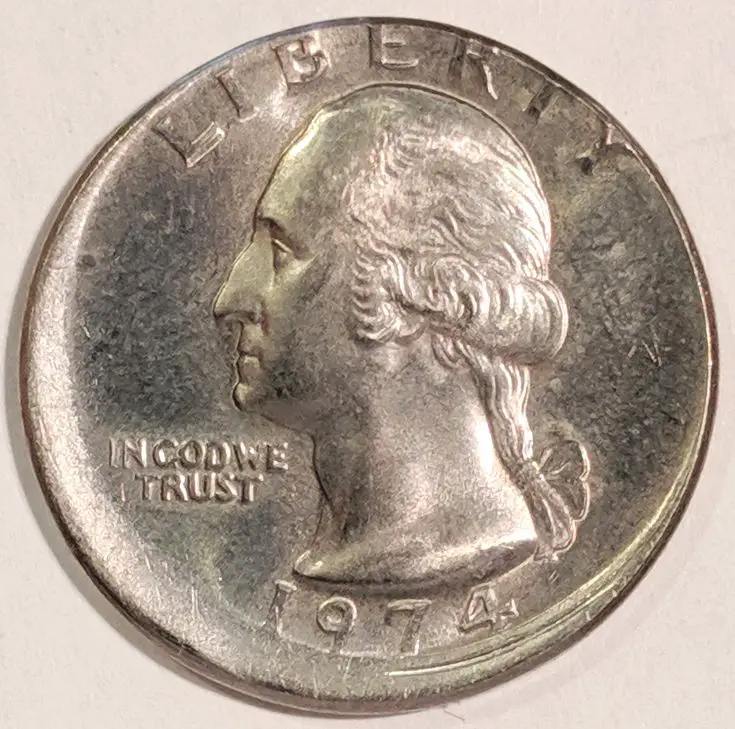
In 1974, the United States Mint produced a small number of quarters that were struck outside of the collar that imparts the edge reeding. These so-called “broadstrike” errors are considerably larger than a normal quarter, and often lack detail in the design as a result of being struck without a collar.
While it is not known exactly how many broadstrike quarters were produced in 1974, they are considered to be quite rare and highly coveted by collectors
1974 Off-Center Quarter
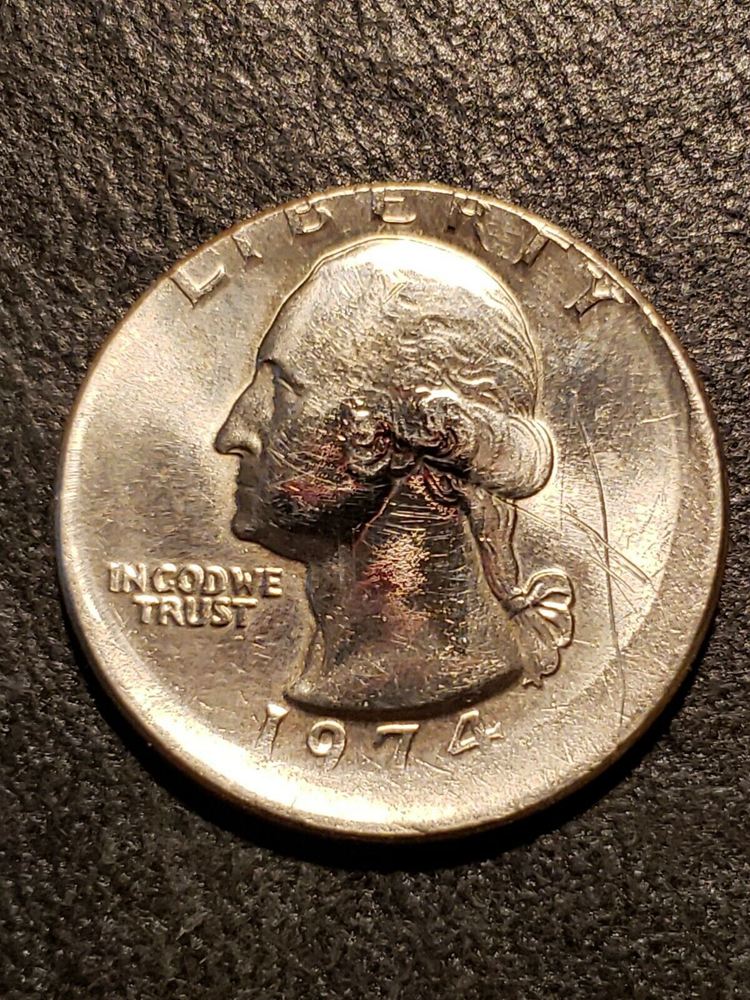
1974 Off-Center Quarter Sold: $19.9
In 1974, the United States Mint experienced a bit of a mishap. A small number of quarters were struck off-center, resulting in coins with an unusual appearance. But how does an off-center error occur? It all has to do with the minting process.
Coins are struck by a die that comes down with great force, imprinting the design onto the metal blank. If the die is not perfectly aligned, it can strike the blank off-center. This results in a coin that is smaller on one side than the other. While an off-center error may seem like a simple mistake, it can actually have a big impact on the value of a coin. Because these errors are so rare, collectors are willing to pay a premium for them.
1974 Quarters Struck on Wrong Planchets
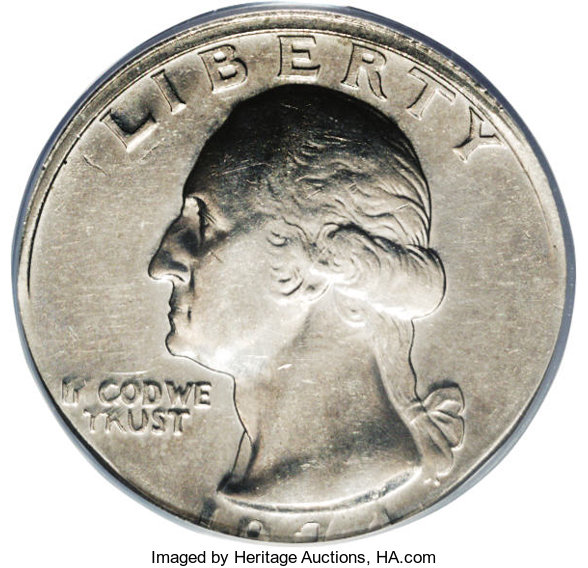
During the production of coins, blanks (or planchets) that are to become quarters are fed into a machine that stamps them with the design for the front (obverse) and back (reverse) of the coin. On occasion, a blank intended for another denomination may mistakenly be fed into the quarter press. If this happens, a quarter with the obverse and reverse designs of another denomination will be struck.
1974 Washington Doubled Die Reverse Quarter
This quarter gets its name from the fact that it was struck twice by the die, resulting in a doubling of the design. While this may seem like a simple mistake, it’s actually quite rare. In fact, only a few thousand of these quarters were ever made. As a result, the 1974 Washington Doubled Die Reverse Quarter is a highly sought-after collectible, with some examples selling for thousands of dollars.
Final Thoughts
Yes, the rumors are true. That 1974 Washington quarter in your hands could be worth a pretty penny – or several hundred of them. But don’t get too excited just yet. Whether or not your coin is valuable depends on a few factors, including its mint mark and condition.
Coins from the Philadelphia mint are typically worth between 75 cents and $5.70, while those from the Denver mint can go for as much as $260 in pristine condition. San Francisco proof quarters are typically worth $4.62 in PR 65 grade and $8-$10 in PR 67 grade.
So before you start considering sweet investments like a new car or a down payment on a house, take your coin to a professional for an evaluation. With any luck, that little bit of pocket change could end up making you quite rich.
FAQ
How Much Does the 1974 Quarter Weigh?
The 1974 quarter weighs 5.67 grams. This is just slightly heavier than a standard U.S. Nickel, which weighs 5 grams. The difference in weight is due to the different metals used in each coin. Quarters are made of an alloy of 91.67% copper and 8.33% nickel, while nickels are made of an alloy of 75% copper and 25% nickel. The additional copper in the quarter contributes to its slightly higher weight.
Is a 1974 Quarter Silver?
Many people believe that the 1974 quarter is made out of silver. Unfortunately, quarters minted in 1974 are not silver – they’re actually made out of a copper core layered in nickel. The silver color is just an optical illusion created by the reflectivity of the nickel coating.
What year quarter is pure silver?
While silver is most commonly found in jewelry and flatware, it can also be found in quarter coins minted prior to 1964. In fact, many collectors consider pre-1964 coins to be some of the most valuable in terms of both silver content and collector appeal.
What is roll hoarding?
For coin collectors, “roll hoarding” refers to a now discontinued practice of storing coins in paper or fabric rolls. The rolls were typically made of two pieces of paper glued together at one end, with the coins placed inside. Sometimes the rolls were also wrapped in fabric for extra protection.
This method of storage was popular among collectors in the early 20th century, as it helped to keep the coins clean and free from damage. However, it eventually fell out of favor as more sophisticated storage methods were developed.
Should you clean old coins before selling them?
You should never clean your old coins. While it may seem like a good idea to make the coins look as shiny and new as possible, the reality is that cleaning them can actually decrease their value.
Coins are typically made from different metals, and exposure to water and chemicals can cause these metals to react. In some cases, this can cause the coin to discolor or even corrode. As a result, it is generally best to leave your old coins as-is when selling them.

